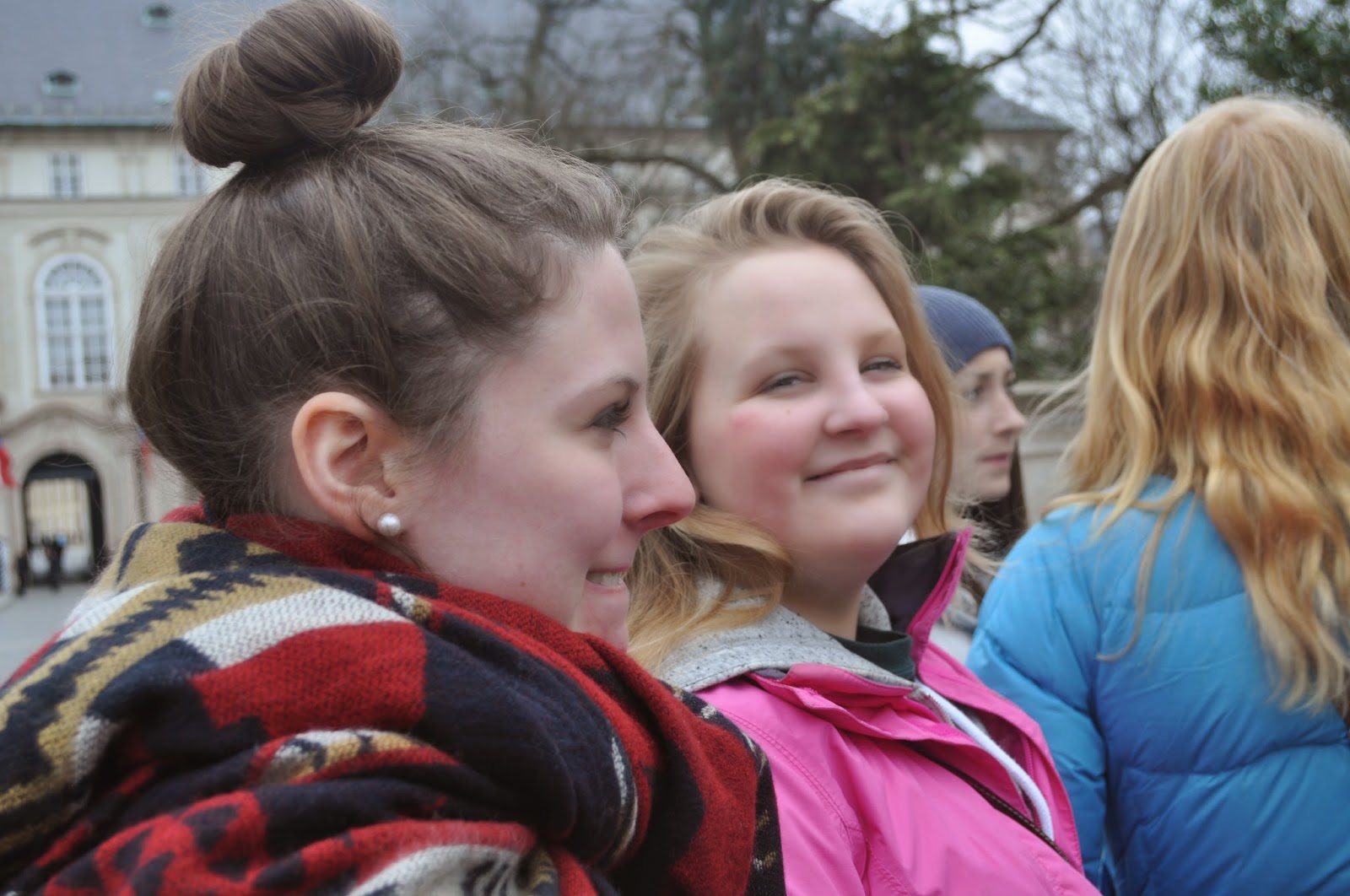After leaving Auschwitz, we headed by bus to Prague. We stopped briefly for lunch, then drove on--Tess loved the roads!--and arrived in Prague in the late afternoon. We left most of our stuff on the bus and walked across the Vlatava (Moldau) River to the Old Town Square and dinner. We had a bit of time to explore the square and change money. Students were pleased to discover that the Easter festival was already open--numerous booths selling food and souveniers. The whole square was decorated, and we learned about some of the Czech Easter traditions (apparently it’s a BIG holiday here). Then it was off to the hotel and some much-needed rest.
Old Town Square cathedral
Why yes, the kids are standing outside the bar--what you can't see in the picture is that the ATM was beside that door, and that's why they were there. They did not go in the bar.
See? Proof! Tess liked the 25:1 exchange rate. She is holding up $80.
Jacob, Sarah, and Aaron check out the craft booths
Justice likes the decorations
Really old gravestones
Rabbi Löw is buried here
That's the cemetery up there!
We headed over to the Old New Synagogue, which is still in use today as it has been for hundreds of years. There we saw a red banner with a six-pointed star--the symbol of Prague’s Jews. This is the first known use of what we now call the Star of David, and it is thought that the six points represented the six gates out of the Jewish District of Prague. That was fascinating! After a brief stop at a statue of one of Prague’s most famous Jews, Franz Kafka, we went into the Spanish Synagogue, where we learned about the Sephardic Jews and the Moorish influence on the building. The display of silver in here was impressive!
The Jewish district
The Hebrew clock (below) runs backwards from what we know, and the short hand is the minute hand while the large one is the hour hand. Unfortunately, we happened to be there at 11:05, which is right when the two clocks match up.
Kafka
His most famous work was Metamorphosis, in which the protagonist wakes up as a cockroach. Thus the statue is on a roach.
Inside the Spanish Synagogue (no flash allowed)
Can you see the Moorish influence?
This looked fun!
Stolpersteine, or stumbling stones, are all over Germany and now in many places in Europe. They are placed in front of a house and have the words "Here lived" and the name and fate of the resident who was a victim of the Holocaust.
We then headed back to the square for lunch before boarding our bus to head up to Prague Castle. This place is 87x bigger than the White House grounds and the biggest castle in the world. It is actually a castle complex at the top of the hill. We watched a changing of the guard and enjoyed some photos before going into the cathedral. It was constructed between 1340 and 1930, and it was massive! The crypt below, which is not open to visitors, holds the grave of Charles IV, the most famous Czech king. However, we did see the grave of St. John Nepomouk and learned the story of St. Vitus, who was thrown in a vat of boiling oil by his father for converting to Christianity. The crown jewels are housed above the grave of their owner, King Wenceslas, and are only taken out a few times each century with the seven owners of the seven keys deciding that.
Blacksmith making crafts for the market
Easter market at Old Town Square
The view from Castle Hill
Hot chocolate in a cafe in the castle
Heading back down the hill
Tess, are you confused?
Seniors in Prague
Most of the group enjoyed the view, but Hailey and Justice made new friends
Archer houses (the blue one was home to Kafka for awhile) on the castle wall have small doors and create a cute alley
Justice wants to come back while Sera makes a wish
Free time in the square:
Kindred spirits
With Jonah!
Cameron, please tell us what Hailey is doing!
Virtually all of the streets looked like this--lovely facades everywhere in the city
































































No comments:
Post a Comment